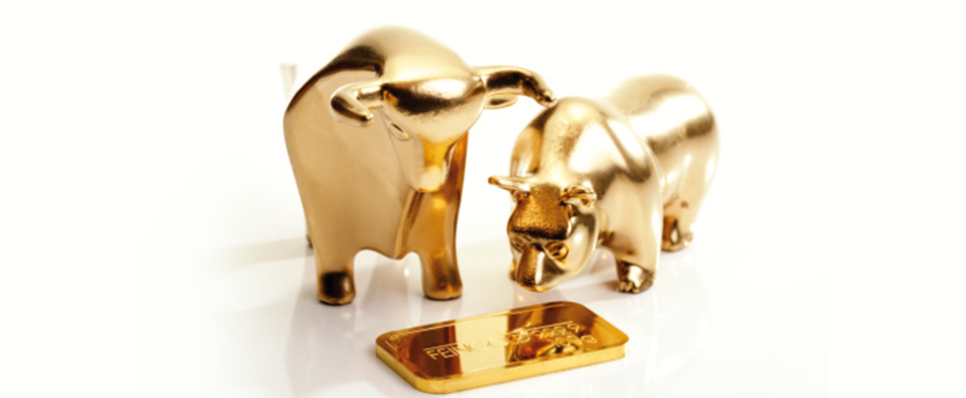Published: 10 Sep 2018
How does gold react when the stock market falls?

It’s a common misapprehension that when stock markets fall, the price of gold falls too. In fact, the reality is just the opposite. Many investors view gold as a hedge against market uncertainties and as a portfolio diversifier.
History has it that gold tends to perform better than stocks in times of market downturn.
Gold vs Nifty
In FY 2008-09, when the Sensex crashed almost 38%, gold generated a return of 24.58%. Similarly, during 2012-13, gold prices in India were on a rapid rise when the Nifty was either flat or in on a downtrend.
If you analyze the chart below, you will notice that gold has been going neck-to-neck with Nifty at most times during the past decade.

Source
Gold vs S&P 500
If we compare the performance of gold and S&P 500 during the worst market conditions since 1976, in 7 of the 8 largest declines in S&P 500 over the last 40 years, gold prices rose relative to the stock market index.
While the price of gold fell during the initial shock of the 2008 financial crisis, prices rebounded to end the year up by 5.5% while S&P continued to decline. Over the total 18-month period of the stock market sell-off, gold prices rose by over 25%.
Gold’s only significant selloff (-46% in the early 1980s) took place just after its biggest bull market in modern history. Gold prices rose over 2300% from its low point in 1970 to a peak a decade later.
The overall message from history is that the odds of gold prices falling during a stock market crash are much lower than people assume. Since stocks tend to benefit from economic growth and stability, while gold tends to benefit from economic distress and crises. If the stock market falls, fear is usually high, and investors typically seek safe havens – and gold tends to be the safest of them all.
The stock market crash of February 2018
Monday, 5th February 2018 is referred to as ‘Volmageddon’ (Volume Armageddon). S&P 500 fell by 113.19 points, which is the largest one-day point drop in history. But the overall drop was 124.21 within 24 hours of the beginning of the sell-off. Adding to the issue of capital movement and flight, Bitcoin touched the significantly important $6,000 mark.
The BSE Sensex fell by over 1200 points in the opening trade on 6th February and after losing 168 points, NSE Nifty closed at 10,498.
In the initial stages of the sell-off gold prices didn’t alter much, but as stock prices tumbled, gold improved, outperforming even short-term treasuries. The stock market pullback was sharp, but short-lived. The Dow Jones Industrial Average fell by 4.6%, but Asian stocks bounced back in the early hours of 6th February, and global stock indices regained some lost ground. Markets fell again on 8th and 9th February, before beginning to trend higher. By Monday, 12th February, the Dow had regained almost half of its maximum weekly loss, and European stocks rebounded by nearly 30%. Stocks in Asia maintained most of their losses during this time.
While gold did lose ground, dropping 0.8% between 2nd and 12th February, it was outperformed only by treasuries. This meant it reduced portfolio losses, and provided liquidity to investors when markets rebounded. And as European currencies weakened against the US dollar during the week, gold prices rallied by 0.9% in Euro and 1.8% in Sterling over the course of this ten-day window.
Gold as a hedge against systemic risk
As a haven, gold normally benefits from flight-to-quality flows. The inverse relationship between stocks and gold means that stronger the market retracement, the stronger turns out to be gold’s rally. In line with the historical trend, gold’s correlation with stocks during the 5th February sell-off turned more and more negative as stock prices fell.
There are, of course, exceptions. Gold is an effective hedge when market corrections affect more than one sector, or last a long time. Risks weren’t enough to prompt a strong reaction to gold when the ‘dotcom bubble’ burst in 2001. It was only when the broader US economy fell into recession that gold prices responded more markedly. Similarly, investors outside Europe discounted the possibility of a spillover from the 2015 Greek default.
A strategy for investors
(The following text will be illustrated)
Gold plays six key roles in any portfolio:
- Delivers positive, long-term returns
- Provides a diversification option
- Offers liquidity during market downturns
- Enhances portfolio performance through higher risk-adjusted returns
- It has historically outperformed cash and money market funds
- Even real estate values follow gold only a little more than half the time
Anything can happen when markets are hit with extreme volatility. But regardless of stocks’ performance, given the multiple roles that gold plays, it would be smart to hold an appreciable amount of gold in your portfolio.
Article source:
Gold.org report – Market Sell-off Bolsters: The Case For Gold











